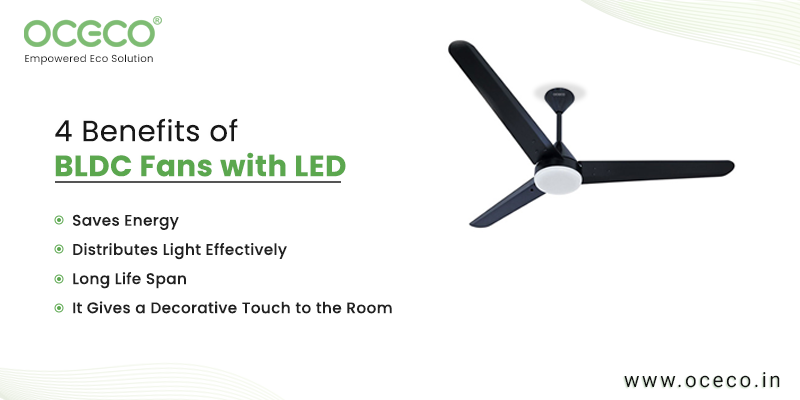Frequently Asked Questions About BLDC Fans

Gone are the days when fans were randomly chosen just to keep the room cool. Nowadays, the best interiors are incomplete without a stylish complementing ceiling fan that has excellent features and functionalities. There are varieties of ceiling fans available in the market. However, one that is recently gaining popularity is BLDC fans.
We know you have often heard the term BLDC fan, but your mind is still clouded about what it is and why exactly you should choose one over conventional fans. Fret not; go through our blog to understand the entire concept of smart BLDC fans.
What is a BLDC Fan?
It is a type of ceiling fan. However, one thing that makes these fans special is its BLDC motor. The full form of BLDC is Brushless Direct Current, and the word brushless indicates that the motor of these fans does not use a brush between the rotor and stator to transfer electricity. The brushless design of the motor reduces heating, mechanical wear, and friction.
The best part about BLDC technology is that the fan will function on low voltage and power fluctuations.
How Does a BLDC Fan Work?
Before jumping on to the working of a BLDC smart fan, let us understand how a normal fan works. In traditional fans, motors have brushes that power blades by creating friction which causes it to wear down with time, ultimately shortening the lifespan of your ceiling fan.
On the contrary, the working principle of BLDC ceiling fan is different. It features a permanent magnet synchronous motor that is highly efficient and offers a better lifespan. The electronic circuit board controls the motor with the help of a sensor that detects the rotor’s position. On the basis of the rotor’s position, the motor receives electrical pulses from the circuit board, allowing the motor to rotate the blades. The entire process consumes less energy and generates lesser friction.
What are the Advantages of a BLDC Fan?
BLDC fan hosts several benefits over traditional fans. However, some of the most important ones are.
Enhanced Performance
The motor of the energy efficient BLDC fan is controlled electronically, allowing better torque and speed control, thereby increasing the fan’s efficiency compared to the conventional fans.
Less Maintenance Cost
In the case of a BLDC motor, carbon brushes are absent between the rotor and stator, which means that there’s no scope for replacing the brush, which automatically reduces the cost of maintenance.
Longevity
The motor of a BLDC fan is brushless, which is why there is no chance of a spark that can burn the motor. Therefore, BLDC motor fan has a longer lifespan.
Low Chances of Failure
Unlike your normal fans, the motor of a BLDC ceiling fan uses an electronic control system, which significantly reduces the motor’s chances of failing from regular usage.
More Efficiency
It is easy to control and monitor the speed with the help of a feedback control system which results in better torque accuracy. As a result, the fan consumes low power, delivers better efficiency, and lasts long.
Reduced Heating
Conventional ceiling fans feature an electromagnet at the center, which results in the heating of the motor. Contrary to that, there’s no magnet at the center of the BLDC motor, ultimately reducing the risk of overheating.
Minimal Noise
The noise coming from the fans is usually a result of the friction generated by the brushes. However, in the case of the brushless ceiling fan, there is no friction, which is a reason why they are less noisy than normal ceiling fans.
Wrapping Up
It is wise to choose BLDC ceiling fans over ordinary ones due to the advantages they offer. Moreover, these fans work on a direct current motor that saves up to 65% of energy and can run three times more on an inverter, all of which is worth bearing the price of BLDC ceiling fan.




